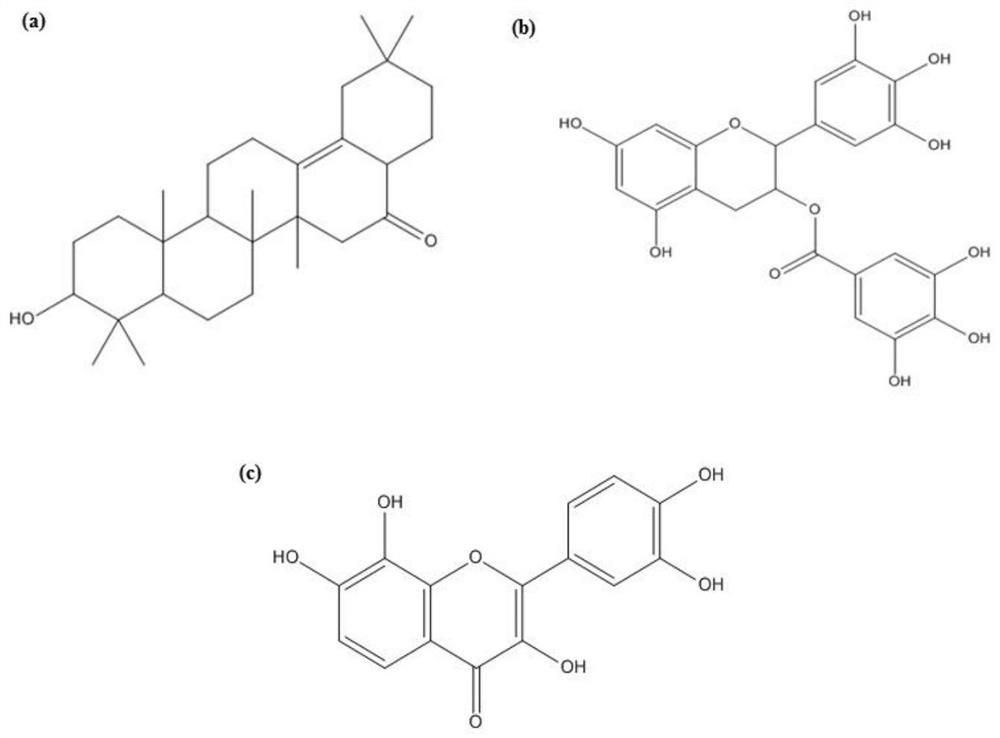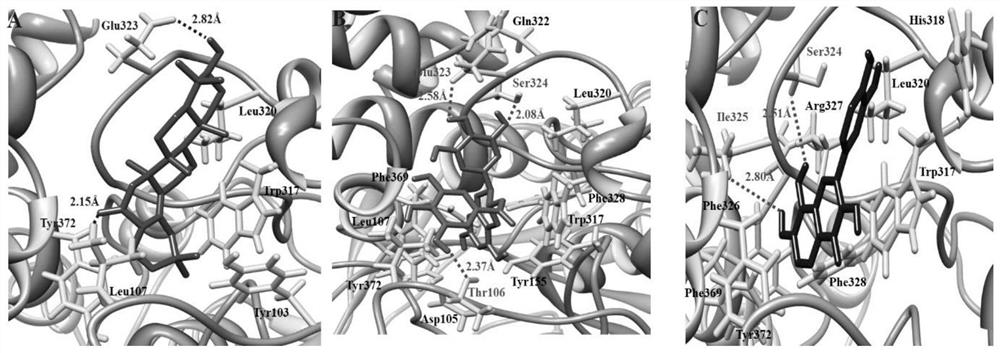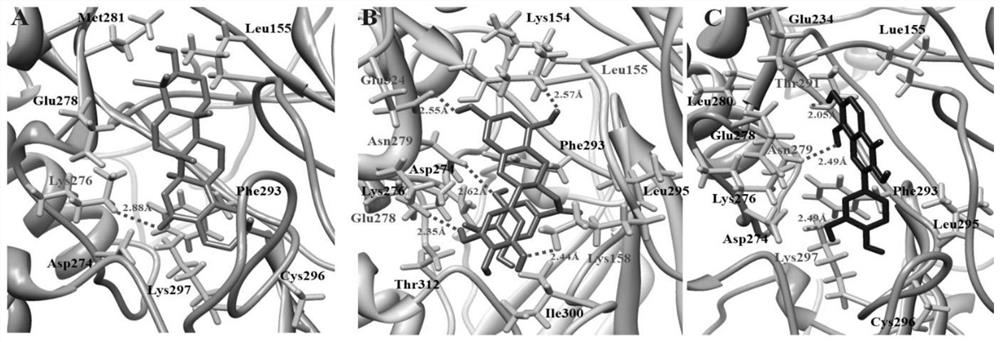Application of plant compounds in preparation of drugs for preventing and treating Alzheimer's disease
A technology for Alzheimer's disease and plant compounds, which is applied in the application field of plant compounds in the preparation of drugs for preventing and treating Alzheimer's disease, and achieves the effect of inhibiting the increase of ROS
- Summary
- Abstract
- Description
- Claims
- Application Information
AI Technical Summary
Problems solved by technology
Method used
Image
Examples
Embodiment 1
[0035] Embodiment 1, the pharmacokinetic analysis of selected compound
[0036] The ADMET properties of selected plant compounds were calculated using the admetSAR server. In terms of absorption, two parameters were chosen, blood-brain barrier (BBB) penetration and human intestinal absorption (HIA). The overall prediction results are shown in Table 1, justifying their good ADMET behavior, suggesting their potential use as disease-specific targets.
[0037] Table 1 ADMET distribution calculation of plant compounds
[0038]
Embodiment 2
[0039] Embodiment 2, cheminformatics analysis of plant compounds
[0040]Computational evaluation of cheminformatics properties of plant compounds. The results showed that three compounds albumin, epigallocatechin-3-gallate and melanin had better molecular weight prediction values. The molecular weights of the compounds were also comparable to the standard values. Table 2 lists the overall predicted values for all compounds.
[0041] Table 2 Drug similarity analysis of 3 plant compounds
[0042] performance Albumin Epigallocatechin-3-gallate melanin Molecular weight (g / mol) 458.37 302.23 426.67 Fat-water partition coefficient value (LogP) 2.23 1.98 7.10 Number of hydrogen bond donors (HBA) 11 7 2 Number of hydrogen bond acceptors (HBD) 8 5 1 PSA (A 2 )
Embodiment 3
[0043] Example 3, Protein Sequence Retrieval, Structure Prediction, and Protein Model Structural Analysis
[0044] In the present invention, there are 14 proteins related to AD, acetylcholinesterase (AChE), RAC-α serine / threonine protein kinase (AKT-1), β-secretase-1 (BACE-1), cyclic Oxygenase 2 (COX-2), Caspase-3, Glycogen Synthase Kinase 3 (GSK-3), Interleukin 6 (IL-6), Mitogen-Activated Protein Kinase 2 (MAPK-2), Matrix Metalloproteins 8 (MMP-8), N-methyl-d-aspartate receptor (NMDAR), peptidyl arginine deiminase 2 (PAD-2), presenilin 1 (PSEN-1), promotive Mitogen-activated protein kinase 14 (MAPK-14 / P38) and tumor necrosis factor (TNF-α), these 14 proteins were used as target molecules. The amino acid sequences of the proteins AChE, AKT, BACE-1, COX-2, Caspase-3, GSK-3, IL-6, MMP-8, PAD-2, PSEN-1, MAPK-14 and TNF-alpha were obtained from UniProt The database (https: / / www.uniprot.org / ) was retrieved in FASTA format with accession numbers P37136, P47196, P56819, P35355, P55...
PUM
 Login to View More
Login to View More Abstract
Description
Claims
Application Information
 Login to View More
Login to View More - R&D
- Intellectual Property
- Life Sciences
- Materials
- Tech Scout
- Unparalleled Data Quality
- Higher Quality Content
- 60% Fewer Hallucinations
Browse by: Latest US Patents, China's latest patents, Technical Efficacy Thesaurus, Application Domain, Technology Topic, Popular Technical Reports.
© 2025 PatSnap. All rights reserved.Legal|Privacy policy|Modern Slavery Act Transparency Statement|Sitemap|About US| Contact US: help@patsnap.com



